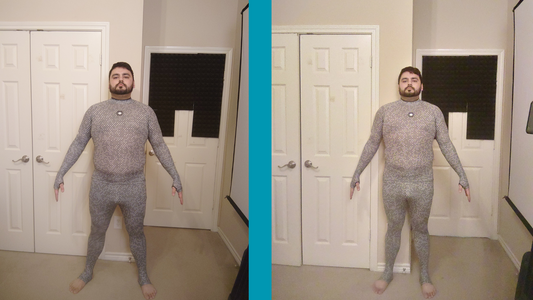

How to Track Macros for Weight Loss: A Guide for Women
When it comes to weight loss, everyone has a different method on how to achieve it. Maybe you should try the keto diet or the carnivore diet, or start a juice cleanse.
Unfortunately, many of the popular fad diets don’t take into account how important some nutrients are to our bodies. We can’t live without carbohydrates or healthy fats. Tracking macros is an answer to fad diets that puts your health first.
For women, tracking macros is an excellent tool for weight loss, and is more effective than just tracking calories. Focusing on macros lets you focus on what you’re eating and the role food plays in providing you with energy and nutrients to go through your day-to-day activities.
What are Macros?
If you’re familiar with the concept of macros, you may have heard about them before in the circles of weight lifters or endurance athletes, who often count them to ensure their bodies are receiving enough fuel to properly compete.
Macros, which is short for macronutrients, are the nutrients your body needs to perform essential functions. These nutrients include carbohydrates, fats, and proteins. For most people new to the world of macros, but familiar with other weight loss methods, counting macros might seem counterintuitive. Many traditional diets recommend drastically reducing or completely eliminating nutrients like carbohydrates and fat.
Let’s talk about the three macronutrients you should be paying attention to:
Carbohydrates. Carbohydrates are any of the sugar, starches, and fibers that you eat. 40-50% of your daily calories should be carbohydrates.
Protein. Proteins provide us with energy and the nutrients for essential bodily functions. When focused on weight loss, 25-35% of your calories should come from protein.
Fat. While fat has a long history of being demonized, it’s incredibly important to our bodies. Eat 20-30% of your daily calories in healthy fats like avocados, seeds, nuts, eggs, and oily fish.
How to Track Macros
Before you start tracking macros, you have to calculate your daily calorie needs. While you won’t necessarily be counting calories for weight loss, everyone still has a baseline calorie need to ensure they have enough energy in the body to complete their daily activities.
To calculate your required calories, you will need to know your activity level and overall goal with counting macros, as well as your weight and height. We recommend using an online calculator or checking out Women’s Health’s guide to calculating your macros for weight loss.
Once you start tracking macros, it’s important to find a way to do so. Many people who attempt to “hit their macros” everyday use fitness tracking apps like MyMacros+ or MyFitnessPal. Both of these apps have the capability to help you track your macros overtime.
Additionally, you may want to invest in a standard kitchen scale, which will help you weigh your food and measure adequate portions.
At first, there may be an adjustment to the lifestyle of tracking macros, but once you get used to it, it will be second nature.
Benefits of Tracking Macros for Weight Loss
One of the issues people who are on weight loss journeys often run into is that they think they should be losing weight because they are counting calories and exercising, but they’re not actually seeing any changes. To look at it another way, first-time marathon runners with high body fat percentage often don’t lose weight during training, even though that seems counterintuitive.
Tracking macros optimizes your weight loss plan so your body gets exactly what it needs to keep going. Even if you eat fewer calories than you burn in a day, if your diet is mostly carbs, you are likely to maintain or gain weight. On the other hand, eating more protein and healthy fats will help you improve and keep muscle mass.
Understanding your daily macros can also impact how your body feels hunger and your metabolic rate, leading to long-term positive changes in your body.
Women Can Track Macros for Weight Loss
For women, one of the major benefits of tracking macros for weight loss is getting out of the restrictive dieting mindset. Counting macros opens you up to new possibilities in food. You won’t have to eat boring or bland diet foods. Instead, you can still eat a full, rich diet of delicious foods that support your body and your weight loss goals.
While tracking your macros for weight loss, be sure to keep track of your progress with ZOZOFIT and celebrate your wins along the way!

![zf-w-[168px] zf-h-[40px]](http://zozofit.com/cdn/shop/t/15/assets/logo-desktop.png?v=117713855448369080381753069598)


